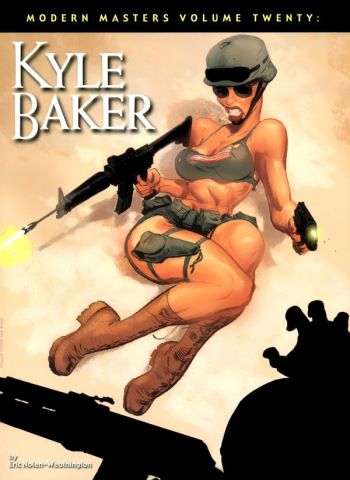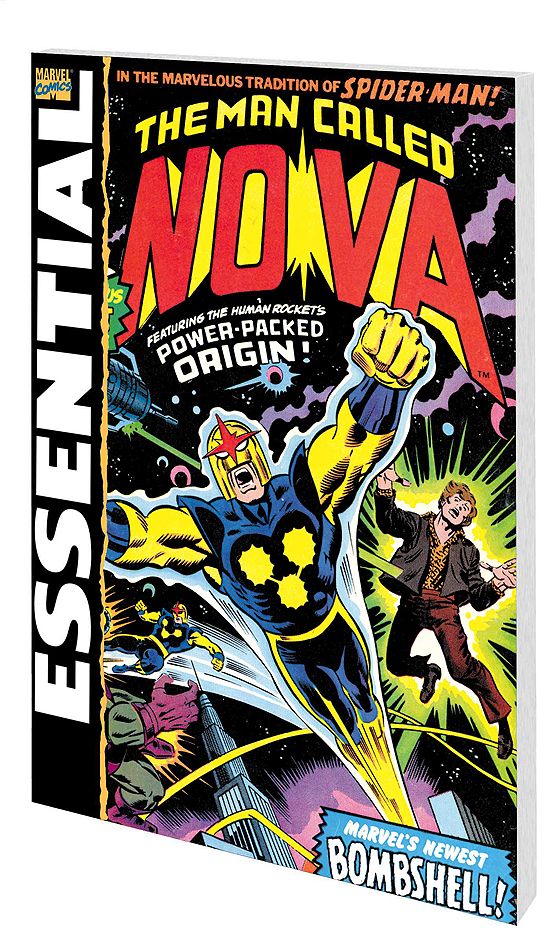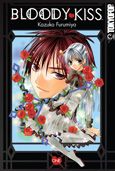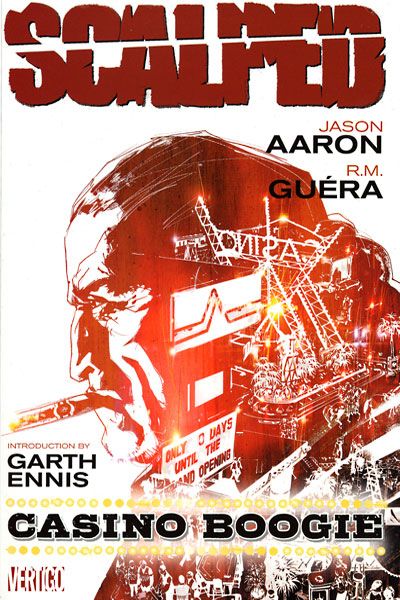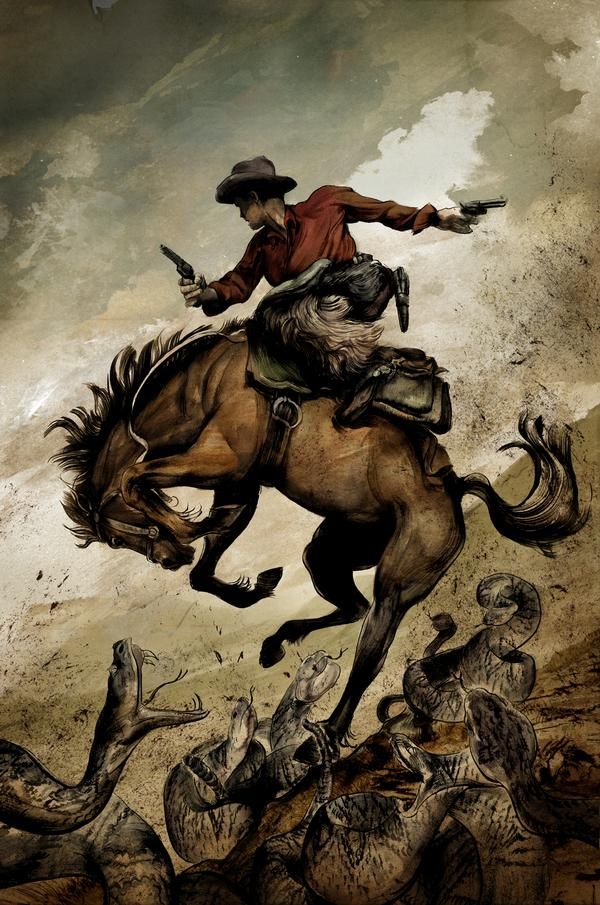Comic-con or no comic-con, gods or no gods, we aim to keep What Are You Reading up and running every Sunday regardless. Our special guest this week is none other than the one, the only Abhay Khosla. Abhay's a regular contributor to Brian Hibbs' Savage Critics Web site, but can also usually be found lurking about here.
To see what Abhay and everyone else is reading, click the little linky ...
Tom Bondurant: I have a lot of affection for the comics of my 1970s youth, but sadly that will not extend to Nova. I'm in the homestretch of Essential Nova Vol. 1 (bought for a deep discount at the LCS's 4th of July sale), and it is perhaps the most deliberately emo superhero comic book I have ever read. Writer/editor Marv Wolfman must have meant it to be an endearing tale of a sad-sack 17-year-old who manages to rise above the troubles of both high school and superheroics. However, because Marv insisted on having Richard Rider beat himself up just as much as the bad guys did physically, Nova is relentlessly frustrating. It goes so far out of its way not to give its hero a break that the emotional high point of the series doesn't come until issue #18. The art is handled mostly by pencilers Sal Buscema and Carmine Infantino, but it's hard to say whether they were good fits for the series because the writing is just so oppressive. (Actually, I'd have loved to see a Michael Golden-drawn Nova, but he was probably busy enough with Micronauts and Batman back then.) I'm guessing things got better for the Human Rocket, since he's gotten popular again. Maybe things will turn around by the end of the book....
Blackest Night: Tales of the Corps #2 was not as enjoyable as the first issue, mostly because the Red Lantern story (written by Geoff Johns, penciled by Eddy Barrows, inked by Ruy Jose) seemed to channel "I Spit On Your Grave" and the Star Sapphire story (written by Johns and drawn by Gene Ha) smelled a little too strongly of authorial
fiat. Sure, Hal was pretty much dead and/or the Spectre for ten years, which allowed Carol Ferris to move on -- so why does it feel like she's being shoehorned back into his life regardless of whether it's good for them? I've read too many "Hal must choose between Carol and the Corps" stories to think there's much hope for any future relationship. Maybe she'll be the one to leave Earth for her Corps. That'd be a nice switch. Oh, and the Orange Lantern story (written by Peter Tomasi, drawn by Tom Mandrake) was a clever riff on a Galactus- esque "I am here to sponge off your planet" alien.
Finally, having greatly enjoyed the recent paperback, I read Madame Xanadu #s 11-12 (written by Matt Wagner and drawn by Michael Wm. Kaluta) and found them just as fun. Well, maybe "fun" isn't quite the word, since part of the story features the Spanish Inquisition and part features some sort of demon-dog. Makes me wish I'd read more of
Wagner's Sandman Mystery Theater, since it's set in 1940, Dian Belmont shows up, and there's a reference to a mysterious masked man. However, good timing on my part, because #13 comes out this week!
Brigid Alverson: This week I am reading the latest batch of review copies from Tokyopop. I started with Zone-00, because it looked promising: The back cover promised a story of a demon versus an exorcist in a Tokyo where a mysterious drug was making everyone go mad. Alas, the crowded page layouts, chaotic storytelling style, and massive amounts of fanservice made it unreadable, at least for me. It’s by Kyo Qjo, the artist of the Trinity Blood manga, and it definitely has an interesting punk look to it, with plenty of creative character designs, so if you go in for that sort of thing, it might be worth checking out. Not for me, though.
Pressing onward, I thought Bloody Kiss was a bit more promising, if only because the story was more coherent. So far it’s not breaking any new ground: It’s the tale of a plucky orphan who has inherited an old house haunted by two hawt vampires who seem to be competing over who gets to make her his “wife,” a vampire euphemism for “permanent food supply.” This story has a much lighter touch than angsty vampire tales like Vampire Knight, but the art is weak and there’s an ick factor with these teenage vampire guys sneaking up on the heroine as she sleeps. Still, I’ll have no problem finishing this volume.
Momogumi Plus Senki is for hard-core manga readers only, not just because it’s based on a Japanese myth but also because it has the sort of stylistic tics that drive non-manga-readers crazy—chaotic action scenes, close-ups of girls with huge, liquid eyes, and characters who go chibi every other panel. If you can make it through all that, though, it looks like it could be halfway decent. The hero, Yuuki, is the reincarnation of Momotaro, Peach Boy, a demon-slayer who was cursed by his victims. Because of the curse, Yuuki has always been a magnet for disaster—when he’s on a train, it derails, when he goes past a window, it breaks. He arrives at a new school to discover three of his fellow students are to be his protectors, plus he has to fight some demons—you know, the usual. There’s a lot of story here, and the art, though stylized, doesn’t look too bad.
Finally, the batch included the second volume of Tsubasa: Those With Wings, an early manga by Fruits Basket creator Natsuki Takaya, which inspired me to dig out volume 1. It’s interesting as an early work, with a plucky thief who is trying to go straight and a shadowy gang that is after a mysterious object, Tsubasa, that grants wishes to those lucky enough to see it. The art is definitely not up to the quality of Takaya’s later work, and the storyline is pretty simple, but it’s good light summer reading.
Matt Maxwell: SCALPED volumes 2 and 3
I'd had volume three for some time but simply hadn't read it yet. Figured that the flight down to SDCC was as good a time as any, despite the odd looks I was sure to get from my neighbor. So, just another two volumes of what's my favorite continuing longform serial right now. Jason Aaron and his team of artists can still make the single issue satisfying and have them fit together in a much bigger picture.
Did I mention that it's kinda twisted? It is. It's also relentless. And the bottom keeps shifting. You think you might have hit it, but the floor keeps dropping out and things fall for a bit then hit another sub-floor that might be grim, but sure beats the abyss that's
lying in wait just below.
Reprinting the Steve Gerber/Mary Skyrene-written original series that inspired the recent Jonathan Lethem/Farel Dalrymple series of the same name. Only just started, and unsurprisingly, it's much more a bronze age comic book than Lethem's modern refiguring. Unsurprisingly, also, given my unabashed love of the bronze age in general and Gerber in particular, I'm enjoying it a lot more, just don't have a lot of time to actually read anything right now.
Darwyn Cooke's adaptation of the Donald Westlake novel is raw and muscular, much more so than even I expected (and I'll admit my expectation was gauged largely by a recent reading of SELINA'S BIG SCORE, which wasn't happy go lucky by any stretch). And to call THE HUNTER "raw" is like saying the scraping chill that blows off the great lakes is "cold," an understatement so obvious as to border on idiocy. But then that's how I roll. I'll note that THE HUNTER is the only book that I've read through this year, stopped, waited a day and then picked up for a second reading and still felt rewarded. Get it, even if you have to work at it a bit. It's a beautiful book whose beauty is in its bones, not in the gloss at the surface.
Michael May: I'm reading Image's Outlaw Territory anthology, which is very dirty and oppressive. Not so much the "Wild" West as it is the "Scary As Hell Because There Ain't No Damn Law" West. But that also makes for an exhilarating experience, because you never know what the next story's going to do. Even though there's a unifying mood to the book that makes these stories belong with each other, the individual tales are very different in terms of themes and plot. It's sort of like riding from town to town must have been like in the actual, old West; never knowing what (often terrifying) adventure the next stop will bring.
I'm also not very far into Cat Burglar Black, which is every bit as wonderful and spooky as a Richard Sala book is supposed to be. Can't wait to finish it and write a full review.
Chris Mautner: I'll keep this short for now (more than usual I mean) cause I'm kind of sleepy. Anyway, I just want to add my voice to Kevin's and anyone else who has praised Naoki Urasawa's 20th Century Boys and Pluto manga series. Right now I'm enjoying Boys a bit more -- it's got a sense of humor about itself that's refreshing, plus Pluto tends a bit toward the maudlin at times. Still, these are both stellar, compelling works and I have little doubt they'll be on just about everyone's short list for best manga -- if not best comics, period -- of 2009.
Abhay Khosla: Hello. Here is what I’m reading. For prose, I’m alternating between two extremes: 2666 by Roberto Bolano, and 39 YEARS OF SHORT TERM MEMORY LOSS: THE EARLY DAYS OF SNL FROM SOMEONE WHO WAS THERE, by Tom Davis.
2666-- the back cover had a quote from Minh Tran Huy from LE MAGAZINE LITTERAIRE (Paris): “Bolano borrows from vaudeville and the campus novel, from noir and pulp, from science fiction, from the Bildungsroman, from war novels; the tone of his writing oscillates between humor and total darkness, between the simplicity of a fairytale and the false neutrality of a police report.”
Minh Tran Huy just sounded like she knew which way was up, so I bought the book. Bolano is Chilean; celebrated; dead. 2666 is actually his last five novels. If I understand the story correctly: Bolano’s dying; he write 5 novels; he hopes his family will publish them one at a time so they’ll have a steady source of income after his death. Instead, they published all five in one go, in a single set of three volumes packaged together.
I’m past-halfway through the first of the five novels — but it’s difficult to say what it’s about. So far, 2666 is about a quartet of literary critics, united by their obsession with an obscure Italian novelist, and the academic conferences they attend, their theories, their rivals in academia, the dinners they have together (which then lead to flashbacks of other dinners they’ve eaten previously and the stories told at those earlier dinners, about horses), et cetera. It’s not exactly pulp thriller material, but: the prose! Bolano goes on single-sentence joyrides that last for six-pages, endless sentences; hints at mysteries, omens, dreams; there’s a pervasive sadness. It’s about literary critics who can’t figure out their romantic lives—it should be terrible. But it’s tense like a horror novel. So far, the prose is too much a pleasure in itself, to stop reading.
The SNL memoir is “beach reading.” LIVE FROM NEW YORK is probably the king of this type of book, the “Saturday Night Live memoir genre”, but 39 YEARS is a strong second-place. It’s more about a life spent in comedy, than strictly an SNL book. After the Chris Farley oral history and Artie’s TOO FAT TO FISH, it was nice to read a book about a life spent in comedy that wasn’t a constant downer. Not that Davis avoids drugs—he wrote for SNL since the very beginning; drugs are mentioned frequently. The book just pays more attention to the actual comedy than other books of this particular genre tend to.
Davis writes quickly; doesn’t dwell too long on any one moment, no matter how interesting. He goes to a Rolling Stones show; hangs out with Keith Richards: “Keith Richards was accompanied by a young man whose job appeared to be constantly rolling hash joints. A caterer brought Keith some exotic taco: ‘I’ve found it’s healthier to eat a little bit several times a day.’” That’s 90% of the Keith Richards story. Quick; snappy.
Davis knows everybody; if he doesn’t, he’s friends with Dan Ackroyd, who does. So, it’s 1976 and he’s in a hot-tub with Ackroyd and Jodie Foster. It’s 1980 and he’s introducing himself to Timothy Leary at a party (Davis: “I’m Tom Davis and I’ve got great smoke and coke.” Leary: “Let’s go”). It’s 1982 and he’s snorting heroin with Mr. Mike outside of John Belushi’s funeral. It’s sort of like a Zelig for comedy nerds.
As for funnybooks, I just finished ASTERIOS POLYP and the Darwyn Cooke HUNTER adaptation, both of which I would guess readers of this blog have already heard of. Besides those, because of a work situation that only recently resolved, my other reading (/life in general) has been pretty badly derailed. Plus: I don’t think these things are worth $4 a shot, so I don’t go to a store as often as I did.
I still have a copy of MODERN MASTERS VOL. 20: KYLE BAKER out. Kyle Baker’s maybe my favorite guy in comics right now. I don’t like everything he does-- not everything he does is aimed at creeps in their 30’s, like me. But (a) he’s constantly trying new things, and (b) he purposely tries to create books that other people aren’t making. He’ll work for Marvel or DC, but mainstream work hasn’t been to the detriment of his personal work. And he’s willing to make a comic book that’s funny. I don’t understand why any of these things are rare qualities, but: oh well, they are. The MODERN MASTERS crew put together a solid interview and gallery of his work; did a nice job. The only other book of the MODERN MASTERS series I have is the Walt Simonson book which is also a fine effort.
I mostly just pick up books by friends/acquaintances—VIKING, ESCAPE FROM THE FINAL CRISIS AFTERMATH, UNTHINKABLE, DEMON CLEANER, EUREKA DOMINANT GENE. Most of my friends/acquaintances are doing the best work they’ve ever done, but, you know: I’m sort-of biased.
I’m following the UTOPIA crossover at Marvel, but half-heartedly. Parts are reasonably fun, if you like Marvel’s current status quo-- there’s a pretty decent scene between Cyclops and the Green Goblin in Chapter 3, say. But the Proposition 8 note that crossover started on just put a sour taste in my mouth a bit. Probably not justifiably: there’s a very long and decent tradition of superhero comics touching on “hot-button” issues. And I don’t have a problem seeing people whose political views I disagree with being equated with super-villains. I do that in my mind anyways.
I guess I just get pretty angry thinking about what’s happened to my state. $4 to feel like that? Maybe that’s an anti-art sentiment, probably that’s not defensible really, but hell, I could spend that $4 on candy, instead, you know? I’ve really been into York Peppermint Patties recently. Have you had one of those in a while? It’s easy to forget—but they’re delicious! The sweetness of the chocolate is so inviting, but then the tang of the peppermint wakes you up a little. Wake you up to the possibility of love? Perhaps! Plus, it’s circular, which in this day and age of candy homogenization and confectionery conformity is pretty courageous. It’s encased in that beautiful silver packaging, like some kind of astronaut condom. I just like the name, too. It sounds kind of vaguely patriotic. I want to love the country I live in—York Peppermint Patties lets me do that, and X-MEN comics don’t. But I also want to support the arts. So, you know: it’s a moral dilemma. It’s the human heart at war with itself.
Best for last: I’m reading the Williams-Sonoma Sapphic Erotica arc of ACHEWOOD right now which is perfect. Right this second: Charles E. Williams is the best character in all of comics. Fact. Scientific fact.


